Arnaud Tourin
Fingerprint Matrix Concept for Detecting, Localizing and Characterizing Targets in Complex Media
Feb 10, 2025Abstract:As waves propagate through a complex medium, they undergo multiple scattering events. This phenomenon is detrimental to imaging, as it causes a full blurring of the image beyond a transport mean free path. Here, we show how to detect, localize, and characterize any scattering target through the reflection matrix of the complex medium in which this target is embedded and thus hidden from direct view. More precisely, we introduce a fingerprint operator that contains the specific signature of the target with respect to its environment. Applied to the recorded reflection matrix, this operator provides a likelihood index of the target in any given state, despite the scattering fog induced by the surrounding environment. This state can be the target position for localization purposes, its shape for characterization, or any other parameter that influences the target response. Our concept is versatile and broadly applicable to different type of waves for which multi-element technology allows a reflection matrix to be measured. We demonstrate this here explicitly by performing different proof-of-concept experiments with ultrasound on targets buried inside a strongly scattering granular suspension, on lesion markers for clinical applications, and on the architecture of muscle tissue.
Time Reversal for 6G Spatiotemporal Focusing: Recent Experiments, Opportunities, and Challenges
Jun 16, 2022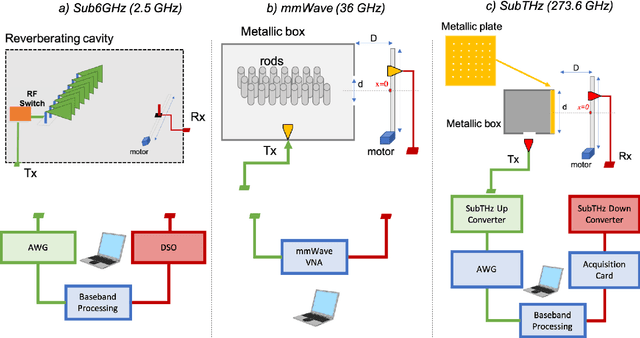
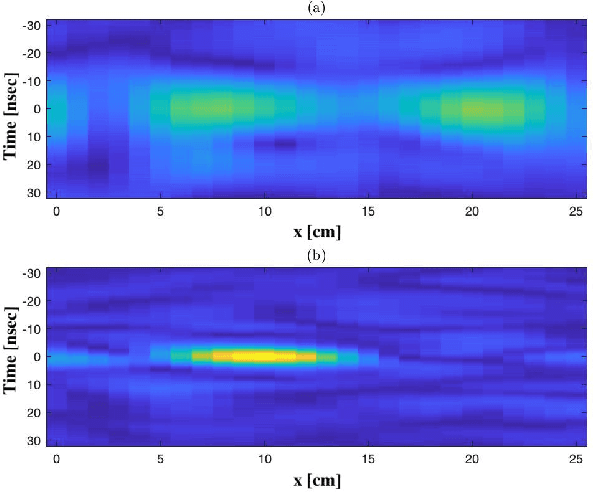
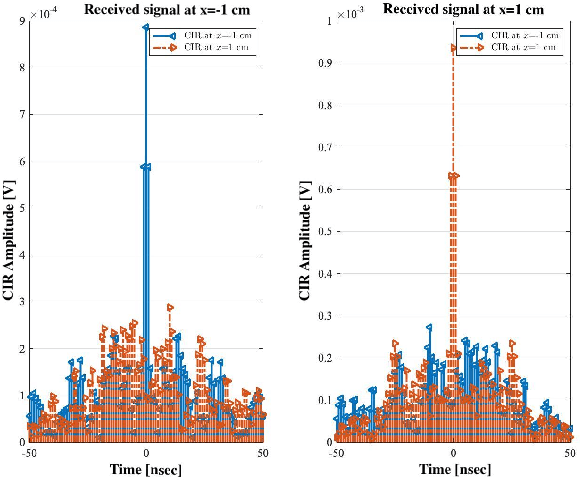
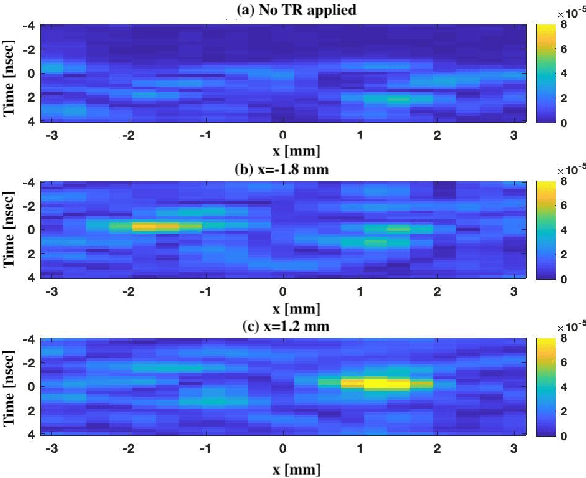
Abstract:Late visions and trends for the future sixth Generation (6G) of wireless communications advocate, among other technologies, towards the deployment of network nodes with extreme numbers of antennas and up to terahertz frequencies, as means to enable various immersive applications. However, these technologies impose several challenges in the design of radio-frequency front-ends and beamforming architectures, as well as of ultra-wideband waveforms and computationally efficient transceiver signal processing. In this article, we revisit the Time Reversal (TR) technique, which was initially experimented in acoustics, in the context of large-bandwidth 6G wireless communications, capitalizing on its high resolution spatiotemporal focusing realized with low complexity transceivers. We first overview representative state-of-the-art in TR-based wireless communications, identifying the key competencies and requirements of TR for efficient operation. Recent and novel experimental setups and results for the spatiotemporal focusing capability of TR at the carrier frequencies $2.5$, $36$, and $273$ GHz are then presented, demonstrating in quantitative ways the technique's effectiveness in these very different frequency bands, as well as the roles of the available bandwidth and the number of transmit antennas. We also showcase the TR potential for realizing low complexity multi-user communications. The opportunities arising from TR-based wireless communications as well as the challenges for finding their place in 6G networks, also in conjunction with other complementary candidate technologies, are highlighted.
Time Reversal Precoding at SubTHz Frequencies: Experimental Results on Spatiotemporal Focusing
Mar 29, 2022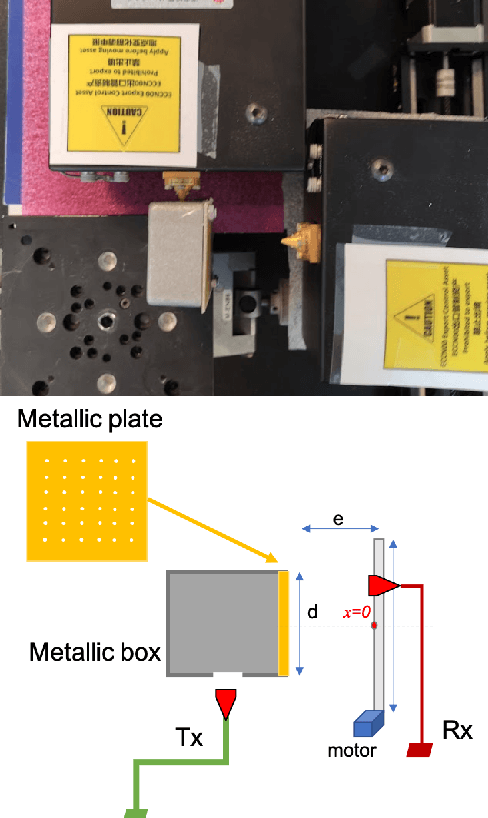
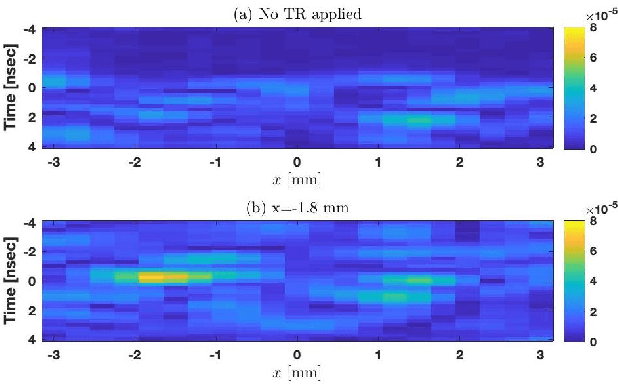
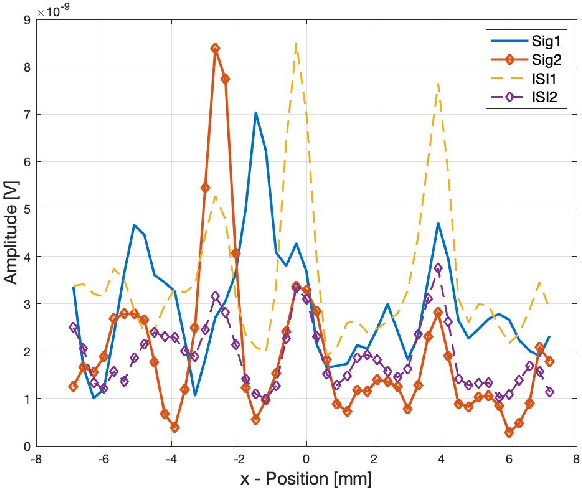

Abstract:Due to availability of large spectrum chunks, the sub-TeraHertz (subTHz) frequency band can support Ultra-WideBand (UWB) wireless communications, paving the way for unprecedented increase in the wireless network capacity. This fact is expected to be the next breakthrough for the upcoming sixth Generation (6G) standards. However, the technology of subTHz transceivers is not yet mature enough to apply the advanced signal processing currently being implemented for millimeter wave wireless communications. In this paper, we consider the Time Reversal (TR) precoding technique, which provides simple and robust processing capable to offer highly focalized in time and space UWB waveforms, exploiting the spatial diversity of wireless channels. We first investigate experimentally the performance of subTHz TR focusing in complex media inside a leaking reverberation cavity. We then combine TR with received spatial modulation to realize data communication using a simple non-coherent receiver with two antennas. Our results showcase the capability of TR to offer focusing in time in the order of few nanoseconds and in space in the order of less than 1 mm.
 Add to Chrome
Add to Chrome Add to Firefox
Add to Firefox Add to Edge
Add to Edge